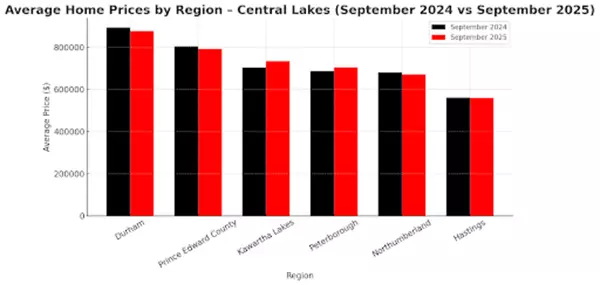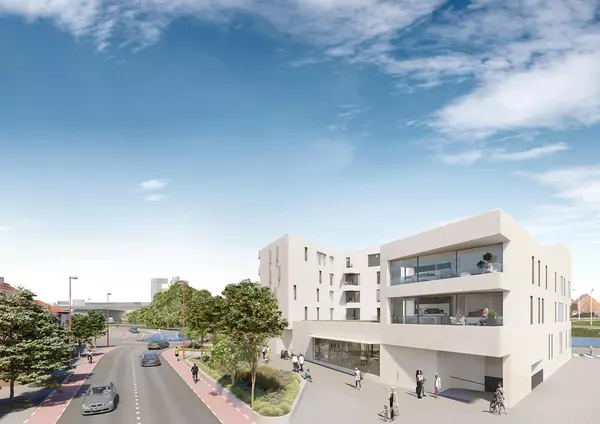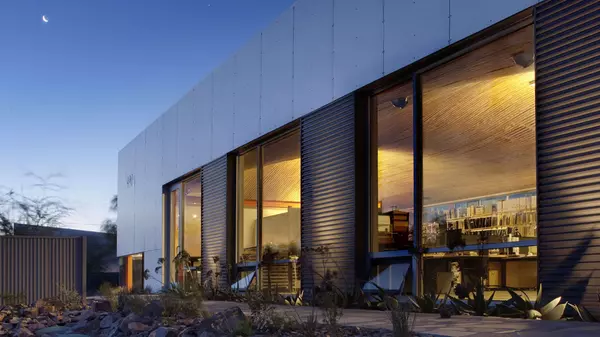Hamilton-Burlington Real Estate Market Update: Sales Improve, Prices Ease in September 2025
The Hamilton-Burlington residential market showed signs of renewed movement again in September after a slower start to the year. It was the third straight month of stronger sales activity. Although activity remains below historical norms, the region appears to be shifting toward greater balance, with expanding supply giving buyers more choice and sellers facing stiffer competition.
Sales
Across the Hamilton-Burlington region, including Hamilton, Burlington, Haldimand County, and Niagara North, overall sales improved modestly from last September, rising by nearly 3%. This continues the positive trend seen through the summer, but activity is still about a quarter below what would typically be expected at this time of year. Year-to-date transactions remain roughly 10% lower than in 2024 and more than 30% below the 10-year average, underscoring how far the market has yet to recover from the slowdown that followed earlier rate hikes.
Listings and Inventory
New listings also rose by just under 2%, keeping pace with the improvement in demand. However, the increase in supply outstripped sales, pushing the sales-to-new listings ratio down to about one-third. Inventory grew by more than 10% compared to a year earlier, and total months of supply climbed by roughly 8% to reach one of the highest levels seen since 2019. This growing pool of active listings has shifted the region towards more balanced conditions, with a few local markets even approaching buyer’s territory.

Source: Cornerstone Association of RealtorsⓇ
Prices
With more inventory available and longer average selling times, prices across the Hamilton-Burlington area continued to edge down in September. The average home price fell by just over 5% compared to last year, while the median price slipped by less than 2%. The benchmark price, which provides a more accurate reflection of typical values, was down by about 9% year-over-year.
Despite the broader declines, the price picture is far from uniform. Established neighbourhoods with limited new supply and strong commuter appeal are faring better, while markets with heavier concentrations of new listings or higher-density housing have seen steeper corrections. Detached and semi-detached homes remain the most stable categories, while row and apartment properties are carrying the bulk of the price pressure.

Source: Cornerstone Association of RealtorsⓇ
Performance by Property Type
The most notable strength in September came from detached and semi-detached homes, where sales grew by roughly 12% and 21%, respectively. Buyers have shown renewed interest in these categories as pricing adjusts and borrowing conditions ease slightly. Even so, average prices in both segments fell between seven and 8% from last year, reflecting continued caution among higher-end purchasers.
Row homes and apartments, by contrast, saw notable slowdowns. Row home sales declined by about one-fifth year-over-year, and apartment transactions fell by close to 9%. Both categories experienced price drops in the range of 5% to 7%, but more notably, the months of inventory for apartments now sit at nearly double that of detached homes. This oversupply in the higher-density sectors is weighing on prices.

Source: Cornerstone Association of RealtorsⓇ
Local Variances
Hamilton
Hamilton recorded one of its strongest months since spring, with sales up more than 7% compared to last September. Detached and semi-detached homes led the improvement, helped by slightly lower prices and greater selection. Even so, total activity remains well below long-term averages.
Inventory in Hamilton has grown by nearly 14% year-over-year, lifting months of supply by about 6%. Conditions vary sharply by area: Dundas continues to see a tighter balance with roughly four months of supply, while Hamilton West remains oversupplied. Prices continue to adjust downward, with benchmark values down around 9% year-over-year. Apartment condos saw the largest declines, with a drop of more than 11%, while semi-detached homes recorded the smallest drop at around 6%.
Burlington
Burlington has maintained steady momentum for several months, with September marking another modest gain in sales, up just over 5% compared to last year. While this reflects improving buyer sentiment, activity still sits well below normal levels, and total sales so far this year remain about 13% lower than in 2024.
New listings increased by more than 7% year-over-year, adding to already strong supply. Inventory is up by roughly 12%, and the months of supply have edged slightly above four. Prices have adjusted in response to these conditions, with the benchmark price down 13% compared to last September and the average sale price about 7.6%% lower. Detached homes have seen the sharpest price corrections, with benchmark values now sitting roughly 10% below where they were a year ago.
Haldimand County
Haldimand County continues to be the standout performer within the region. Sales improved by nearly 6% from last year, making it the only area to post year-to-date growth. At the same time, new listings declined by about 5%, keeping supply in check. Inventory has dropped slightly, sitting almost 5% below last year, and bringing months of supply down by about 10%.
This combination of stable demand and tighter supply has helped support prices. Average values in Haldimand County actually increased by about 4% year-over-year, even though benchmark prices eased marginally. Price adjustments varied by community. Dunnville saw the largest declines at around 8%, while Caledonia recorded smaller drops. Apartment-style units were the weakest segment, posting declines of roughly 9%.
Niagara North
Niagara North remains the softest of the four markets, with sales down more than 28% compared to last year and the slowest annual pace in more than a decade. Although new listings have also declined slightly, the number of active listings has grown modestly, pushing supply to one of the highest levels in the region. The months of supply rose by nearly 45% year-over-year, keeping the market firmly in buyer’s territory.
Prices have continued to adjust under these conditions. The benchmark price fell by more than 9% year-over-year, and the average price declined by nearly 10%. The heaviest price pressure remains in the row and apartment sectors, while semi-detached homes have shown more resilience with smaller declines of around 3%.
Recent Posts











